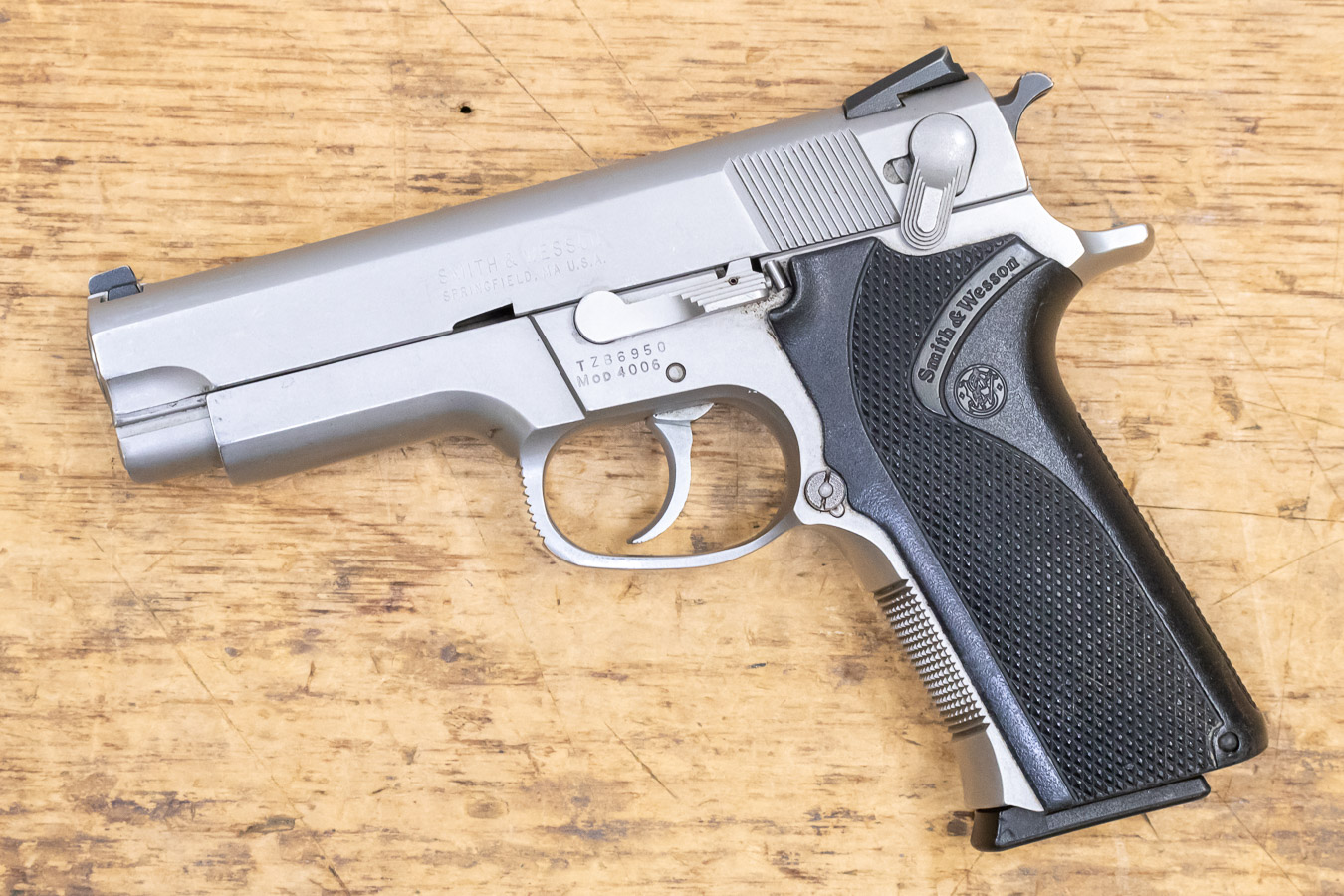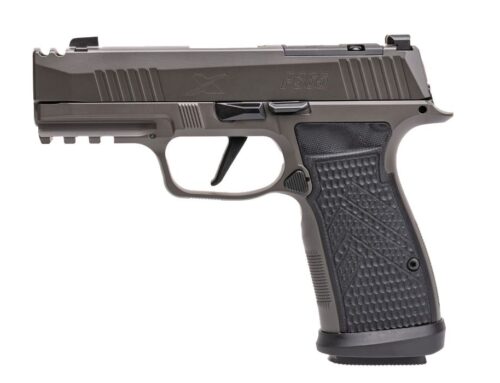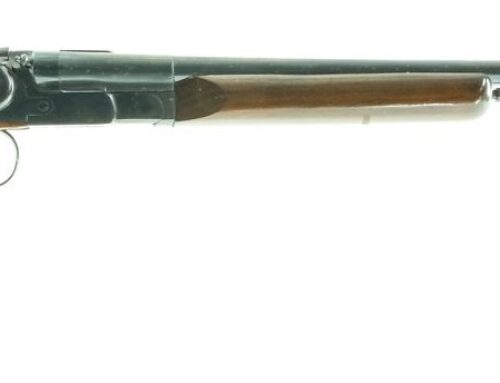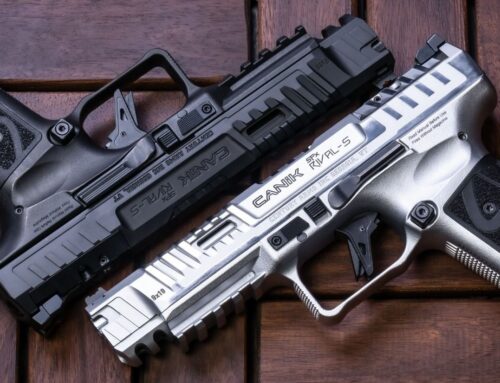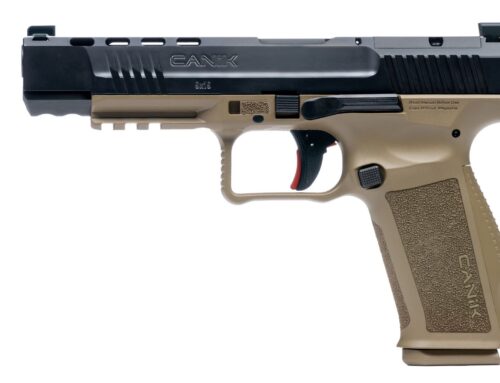Here we are, well through 2023 and I’m talking about a .40 caliber handgun. It would be easy to think the .40 S&W ship has sailed and in a lot of ways it certainly has, but I’ll admit to always having a soft spot for the “short & weak” 10mm. Once again the stars have aligned and I’ve found something a little more special than the average .40 which everyone seems to want to be rid of. In fact, I’ve managed to discover the .40’s origin story in the form of a handgun.
January of 1990. The crazy 80’s are officially on their way out but signs of its influence continue to hold firm. Smith and Wesson introduces the third generation of their very popular metal framed handguns, now with a new flagship that is the 4006. Developed alongside Winchester with the brand new .40 caliber bullet, this upscaled 9mm sidearm was built top to bottom with stainless steel and was beefed up in all of the right places to make sure it would survive the more powerful round until the end of days.
Curiously, much like the story of copied homework with the .44 Magnum, Smith and Wesson may have started this project but Glock had managed to beat them to the punch by bringing the first .40 caliber handgun to market. Glock cheated though, the real first place is with the 4006.
A large sidearm pushing just shy of the 40 ounce mark in its stainless format and closer to 29 ounces with the aluminum framed 4003 and 4043, these handguns saw all sorts of variations including fixed Novak style sights, adjustable sights, rounded and hooked trigger guards, flat backed and hump backed grips, single and double action triggers, standard and bobbed hammers, and the last model featuring a Picatinny accessory rail, even now they see active duty use in parts of the U.S.
A magazine disconnect safety had originally been standard based on requests from law enforcement but I had read that upon agency request a Smith and Wesson armorer would stop by and show them how to disable this feature.
This model of 4006 has a double action trigger and an ambidextrous slide mounted safety/decocker very similar in feeling to a Beretta 92. As a single action there is some initial take-up but once it hits the wall you are right on the point of dropping the hammer with I would guess somewhere between three to five pounds to the pull. After release there is no over-travel. As a considerable plus for me, the trigger doesn’t “bottom out” inside of the trigger guard like a lot of pistols do and stops travel with a notable gap between trigger and frame. You won’t risk pinching yourself when firing one of these guns. The double action pull is quite smooth in this example but I’m sure it’s seen use and had plenty of time to break in.
Shooting a 4006 is pretty darn enjoyable with its considerable weight soaking up the .40’s recoil like most modern handguns deal with 9mm. If not for the weight and a somewhat squared off grip in the web of my thumb I could shoot a 4006 all day. The matte stainless look with black trim is quite attractive and there’s a definite feeling of substance when you put it into your hand. The controls are smooth and crisp and function is on par with or better than anything you would find new on the shelf. The trade-off of course is the more dated design philosophies, while completely functional and rock solid a gun like this doesn’t baby its operator.
The adjustable rear sight is chunky when viewed from the back but solid detent adjustments let you easily dial in and stay on target. While the Novak sights are probably better for visibility I’ve always preferred the stainless “ears” around the rear sight which gives these guns a more distinct side profile.
Perhaps the biggest downside to owning a 4006 or 4003 these days is trying to find magazines. Long out of production, the double stack 11 round mags seem to be built quite well but if you find one for sale expect it to be both used and costly. That said, I am led to believe there are two variations of magazines for these pistols and I think the color of the follower is an indication of which you have. This model has yellow followers, the magazines are on the slimmer side and I’ve not found anything else which will fit. However, I have seen pictures of blue followers and even found where people have made other magazines work such as the Beretta 96 which mine will absolutely not fit.
It’s unfortunate Smith & Wesson stopped production of these handguns as they truly are excellent. Fit and finish is superb, operation is smooth, accuracy is everything you could ask for. These days the used market is the place to go, however I’ve seen far more aluminum framed 9mm variants than stainless options in any caliber. The 9’s may have aftermarket magazine support, as well. Used guns are likely to show a lot of wear and tear but with how solidly built these workhorses are you could consider them to be heirloom quality, they will easily outlive their owners. A spot of Cerakote or similar and they’ll be good for another forty years.
Production ended in 2011 when S&W shifted their focus on polymer frame striker fired pistols, the first famously landing them in a heap of hot water with none other than Glock for copyright infringement. Go figure, right? Coming in from the heels of the heavy but excellent metal framed guns these initial “Sigma” pistols had budget pricing and truly awful triggers, however as with any venture there are growing pains and lessons to be learned. From these first models came the excellent M&P series which can now be had in everything from .22 to 10mm. It would seem that lessons have certainly been learned, though nothing will ever quite match the feel of these older all metal pistols.



